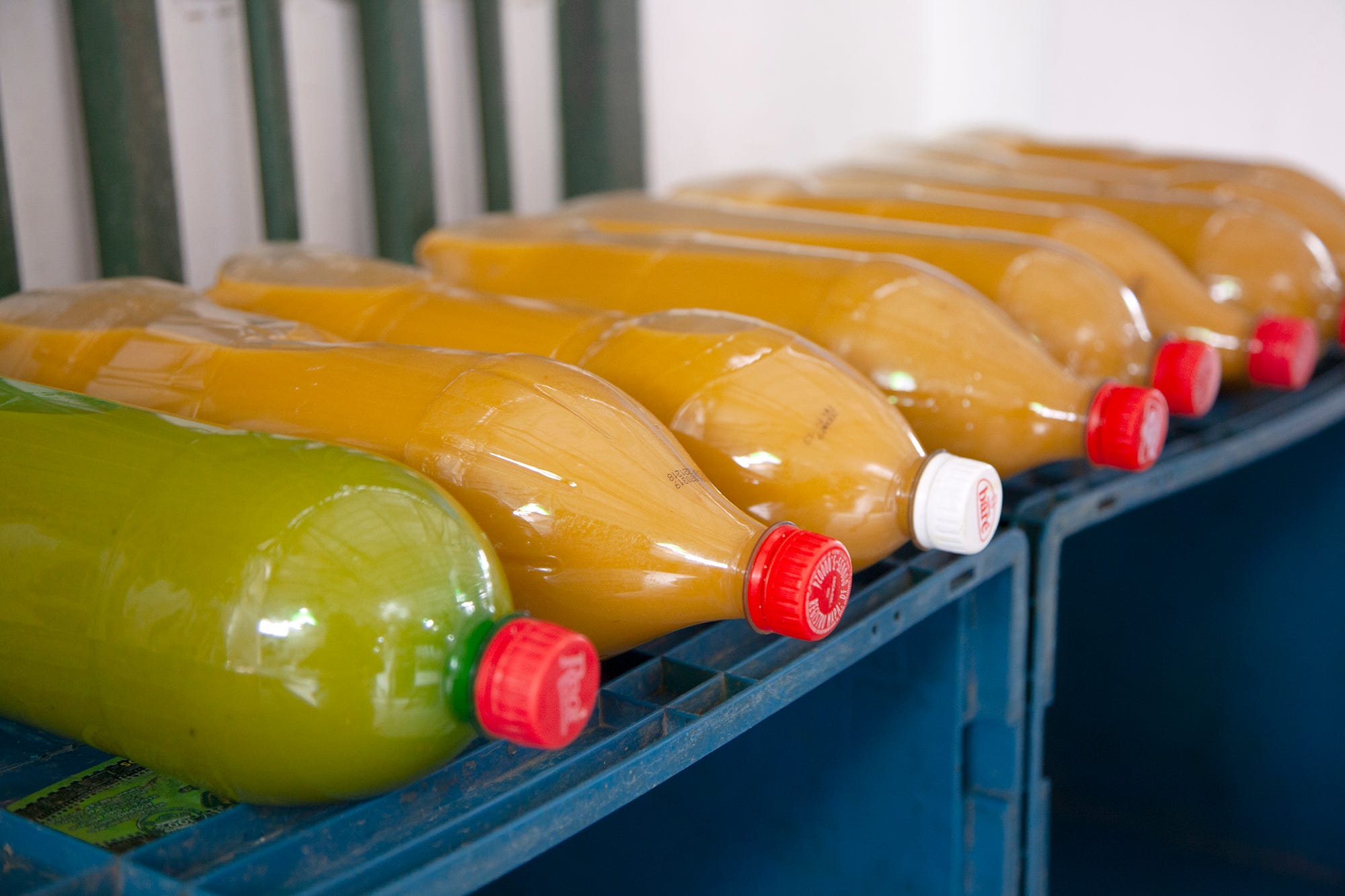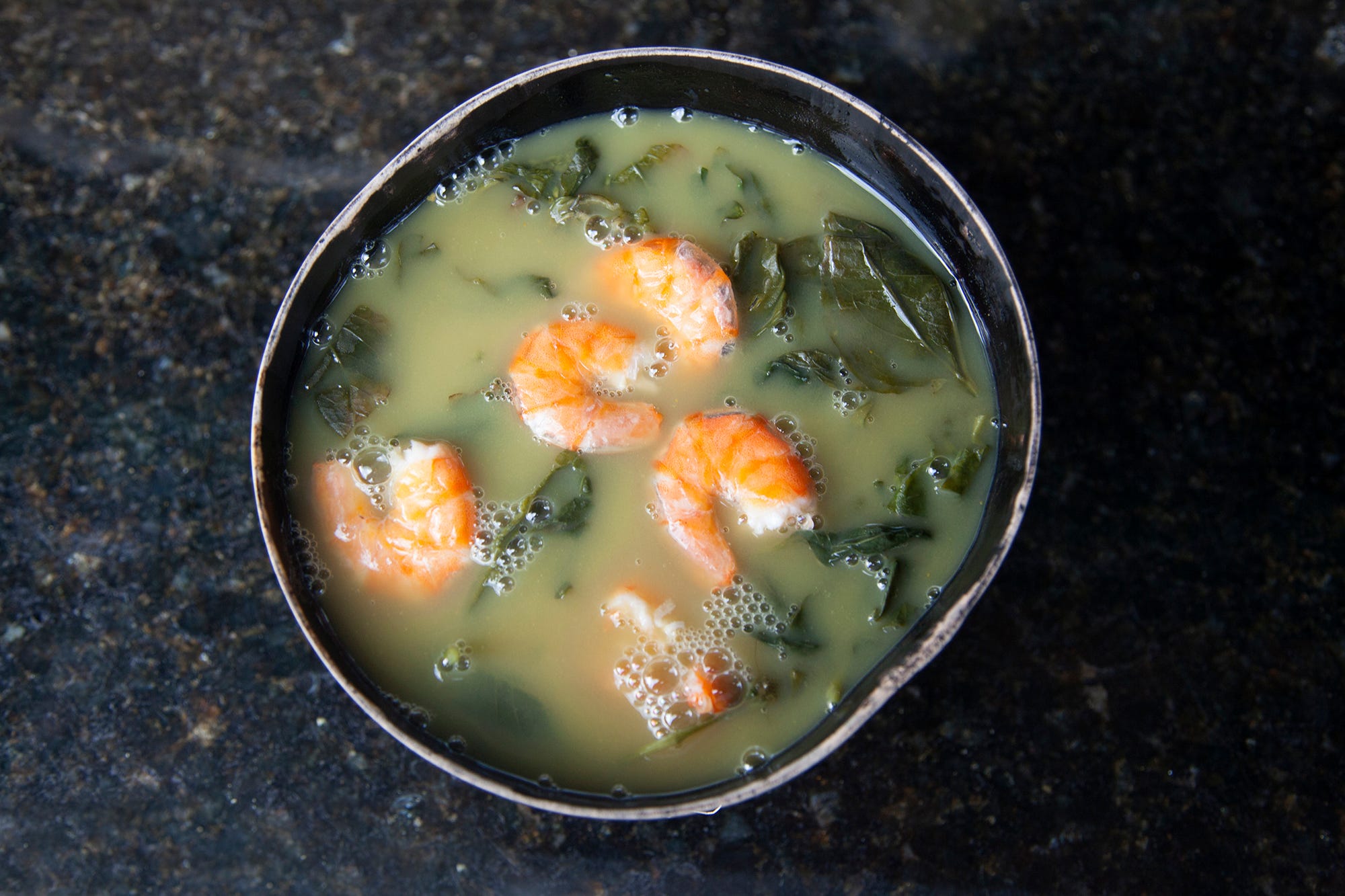Everything You Ever Wanted to Know About Tucupí
The sauce from the Amazon that everyone is talking about.
A once obscure Amazonian sauce, tucupí has become a buzz word in Latin American culinary circles over the last few years. While awareness about this sauce made from yuca (aka cassava or manioc) has spread, the understanding of what it is and what it represents to people in the region remains limited.
From the otherwise toxic form of a relatively neutral ingredient, yuca, some of the most incredible flavors have been coaxed by indigenous communities throughout the Amazon for generations. Tucupí, and its reduced form, can be funky fermented and citrusy while also bitter, sweet, salty and spicy at the same time. It can be a preservative. It can be purifying. It can be a marinade, a shot of umami in a stew, a glaze or a dip. In the right conditions, it can even change economies.
What is tucupí?
In its basic form, tucupí is made from the liquid extracted from yuca that is then fermented and seasoned. It has an intense yellow color and in Brazil this form is known as tucupi amarelo, or yellow tucupi. It is widely used by indigenous communities throughout the Upper Amazon Basin and in regional recipes, especially in the Brazilian state of Pará. There is no single recipe for tucupi in any of its forms and its uses vary considerably from one community to the next.
Tucupí also has a reduced form, called tucupí negro or tucupí preto, which is dark in color and can range in from a liquid to a paste. It is this tucupí that is finding more of a home in the world of modern gastronomy in Latin America.
Some indigenous communities have distinct names for tucupí, such as casaramá, ualako, kumachi, or andualako, though many communities just use the term tucupi for one or both forms.
How is tucupí made?
Indigenous communities around the Amazon basic have passed down recipes to make tucupí from generation to generation. The basic recipe for tucupi is to peel bitter yuca (Manihot esculenta), sometimes called yuca brava, the poisonous form of yuca or cassava, and then grate it and squeeze it through a woven instrument known by some cultures as a tipiti. While the pulp is used to make casabe and other forms of yuca flatbreads, the liquid is left to rest for about six hours until the starch separates from it, and then it needs to ferment for several days. The longer it ferments the more acidic it becomes. Still poisonous at this point, it needs to be boiled for a short period of time to eliminate any remaining cyanide and then it becomes tucupi, which is a funky, sour yellow juice. In some places, salt, garlic, chicory and herbs like alfavaca (Ocimum campechianum) are used to season the broth when it is being boiled.
Tucupí Preto/ Tucupí Negro
Making tucupí negro or tucupí adds yet another labor-intensive process to tucupi. In the most basic sense, it is tucupi that has been further fermented and reduced over heat for several days. It takes on a darker color and changes in consistency. Every community makes it a little bit differently. The seasonings vary depending on the landscape and personal preferences. Some add chiles, seeds or insects for additional flavors and texture. Some variations are thin like a broth, while others reduce it to more of a paste. The sauce develops in complexity and additional flavors are brought out – smoky, bitter and spicy.
Traditional and modern uses for tucupí
Tucupí’s uses are seemingly limitless. Yellow tucupi is used like a broth or marinade in many cases and it’s used to infuse acidity into stews and sauces. In Belém do Pará, yellow tucupi is the signature ingredient into two of the city’s most emblematic recipes. In Pato no Tucupí, duck is boiled in a tucupi broth, usually with garlic and jambu (Acmella oleracea), a mouth numbing, leafy green herb. Tucupí is also used in tacacá, a common street soup in Amazonian cities like Belém and Manaus, where it is served in hollowed gourds with jambu, dried and salted shrimp, and goma de mandioca, a gel made from hydrated manioc starch that gives it a silky texture.
Tucupí negro is used as a seasoning in stews, a glaze for meats and fish and a dip for cassava bread. In fine dining, it’s most used in sauces, though Eduardo Martínez at Mini-Mal in Bogotá even uses it in sweet dishes like ice creams. In the Alto Rio Negro area of northwestern Brazil, tucupi preto is sometimes mixed with Saúva ants, which taste a bit like lemongrass, to make a marinade that’s unlike anything I’ve ever tried.
Is tucupí the same as cassareep?
Tucupí has existed with indigenous communities in Guyana under the name cassareep, much like it has elsewhere in the Amazon for centuries if not longer. In the early 19th century while under British rule, when slavery was being abolished there and an influx of indentured servants from India came to the country, the recipe for tucupi negro in Guyana began to change. Ingredients such as cinnamon, brown sugar and cloves were added and cassareep took on a syrupy, molasses-like texture. Cassareep is now used in countless Guyanese dishes, such as Pepperpot and Stew Chicken, as well as in Caribbean Christmas cakes to give them their signature dark color. Cassareep is also used for preservation, as its antiseptic properties allowed people to travel to travel with pots of tubers and meats or fish on multi-day canoe trips without it going bad.
Where to buy tucupí?
The majority of tucupi that is bought and sold is done so in markets in Amazonian towns and cities. Either might be found piled up in plastic soda bottles in and the consistency can vary wildly. There is little idea of where the tucupi sold in markets is coming from or how long it has been there. It’s an extremely artisan product.
As demand for tucupí is spreading beyond indigenous communities, there has been a wider push to commercialize tucupí in recent years. The most widely produced tucupi available, in both tucupí amarelo and tucupi preto forms, comes from the company Manioca in Belém do Para, Brazil. The company is operated by the family of Paulo Martins, a chef from Belém, who is often credited as being one of the first to use Amazonian ingredients in modern gastronomy. Their products are widely available in Brazil and in the U.S., small importer Culinary Culture Connections based in Bellevue, Washington carries some of their products.
There have also been attempts at commercializing more artisan versions of tucupí. The Bora-Huitoto village of Pucaurquillo outside of Iquitos, Peru, has streamlined their process with the help of Despensa Amazónica, an NGO supported by Peruvian chef Pedro Miguel Schiaffino, and have packaged normal and spicy versions of their tucupí negro in attractive bottles that are available in gourmet stores in Lima, Peru. Other communities in Brazil, Ecuador and Colombia are also managing to sell their tucupi direct to restaurants in cities like São Paulo, Quito and Bogotá. In some cases, sales of tucupi, an ancestral product that was believed to have no monetary value, has changed Amazonian economies in a way that allows them to resist destructive activities such as logging and mining.
RECIPE: Yellow Tucupí
Keep reading with a 7-day free trial
Subscribe to New Worlder to keep reading this post and get 7 days of free access to the full post archives.






